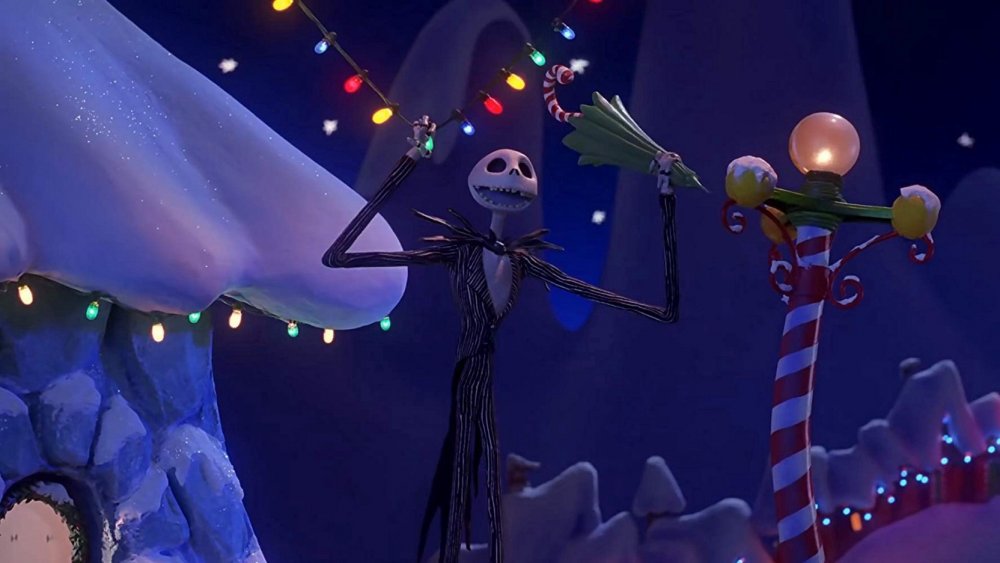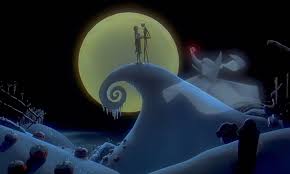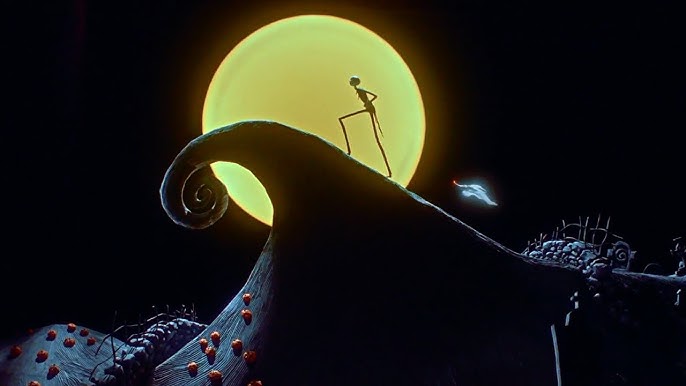The Nightmare Before Christmas (1993)

The Nightmare Before Christmas (1993) Review: A Timeless Stop-Motion Masterpiece
Introduction: The Birth of a Cult Classic
The Nightmare Before Christmas (1993), directed by Henry Selick and produced by Tim Burton, stands as one of the most iconic animated films of all time. A perfect blend of gothic aesthetics, whimsical storytelling, and groundbreaking stop-motion animation, this movie has captivated audiences for decades. Set in the magical world of Halloween Town, the film follows Jack Skellington, the Pumpkin King, as he embarks on an ambitious but misguided quest to take over Christmas.
The film’s unique visual style, hauntingly beautiful music composed by Danny Elfman, and the unforgettable characters have cemented its legacy as a holiday classic. Whether you consider it a Halloween film, a Christmas movie, or both, The Nightmare Before Christmas continues to enchant viewers of all ages.
Plot Summary: Jack Skellington’s Christmas Quest
The story begins in Halloween Town, a fantastical realm where Halloween is celebrated year-round. Jack Skellington (voiced by Chris Sarandon, with Danny Elfman providing the singing voice), the town’s beloved Pumpkin King, grows weary of the same spooky celebrations year after year. Longing for something new, Jack stumbles upon a portal to Christmas Town, a vibrant and cheerful world filled with lights, presents, and holiday joy.
Fascinated by the concept of Christmas, Jack decides to bring the holiday spirit back to Halloween Town. He convinces the townsfolk to help him take over Christmas, assigning each member a task to recreate the festive holiday in their own unique, spooky style. However, Jack’s understanding of Christmas is warped by his Halloween-centric perspective, resulting in a chaotic and creepy version of the holiday.
Things take a darker turn when Jack enlists the mischievous trio Lock, Shock, and Barrel to kidnap Santa Claus. Meanwhile, Sally (voiced by Catherine O’Hara), a kind-hearted ragdoll with unrequited love for Jack, foresees disaster and tries to warn him. Despite her efforts, Jack delivers his eerie Christmas gifts to unsuspecting children, causing widespread panic.
Eventually, Jack realizes the error of his ways and sets out to rescue Santa Claus from the clutches of the villainous Oogie Boogie. In the end, Jack learns to embrace his role as the Pumpkin King and rekindles his love for Halloween, while Santa restores order to Christmas.
Character Development: A Cast of Unforgettable Personalities
Jack Skellington is the heart and soul of the movie. His character arc, from disillusionment to self-discovery, is both relatable and poignant. Jack’s curiosity and ambition drive the plot, but his journey is also a cautionary tale about understanding and respecting boundaries. Chris Sarandon’s voice acting and Danny Elfman’s soulful singing bring Jack’s character to life, making him one of the most iconic protagonists in animated film history.
Sally, the gentle and resourceful ragdoll, serves as Jack’s moral compass. Her unrequited love for Jack and her premonitions of disaster add emotional depth to the story. Sally’s independence and courage shine as she defies her creator, Dr. Finkelstein, to help Jack and ultimately save the day. Catherine O’Hara’s performance imbues Sally with a quiet strength that resonates with audiences.
The film’s antagonist, Oogie Boogie, is a flamboyant and sinister figure who embodies chaos and greed. Voiced by Ken Page, Oogie Boogie’s jazzy, high-energy scenes contrast sharply with the rest of the film, providing a thrilling climax.
The supporting characters, including Lock, Shock, and Barrel, Dr. Finkelstein, and the Mayor of Halloween Town, each add their unique quirks to the story. The eccentric residents of Halloween Town, from the Vampire Brothers to the Harlequin Demon, enrich the world-building and provide moments of humor and charm.
Visuals: A Stop-Motion Spectacle
The Nightmare Before Christmas is a groundbreaking achievement in stop-motion animation. The film’s distinct visual style is a testament to Tim Burton’s artistic vision and Henry Selick’s meticulous direction. Every frame is crafted with painstaking attention to detail, from the jagged, eerie architecture of Halloween Town to the warm, glowing hues of Christmas Town.
The character designs are equally striking, blending gothic and whimsical elements to create a cast that is both creepy and endearing. Jack’s skeletal figure, Sally’s stitched-together appearance, and Oogie Boogie’s burlap sack body are instantly recognizable and perfectly suited to the film’s aesthetic.
The use of practical effects and hand-sculpted models gives the movie a tactile, timeless quality that CGI animation often lacks. The seamless integration of these elements creates a visually immersive experience that transports viewers into the fantastical worlds of Halloween Town and Christmas Town.
Music: Danny Elfman’s Masterful Score
One of the standout features of The Nightmare Before Christmas is its unforgettable soundtrack. Composed by Danny Elfman, the music is integral to the film’s storytelling, with every song advancing the plot or deepening the emotional resonance.
From the opening number, “This Is Halloween,” which introduces the quirky residents of Halloween Town, to Jack’s soul-searching ballad, “Jack’s Lament,” each song captures the essence of the characters and the world they inhabit. Other highlights include the playful “What’s This?” as Jack discovers Christmas Town, and the sinister “Oogie Boogie’s Song,” which perfectly encapsulates the villain’s flamboyant personality.
Elfman’s score seamlessly blends gothic tones with festive melodies, creating a unique musical identity for the film. The lyrics are witty and clever, adding layers of meaning to the songs and enhancing the overall narrative.
Themes: Identity, Ambition, and the Spirit of the Holidays
At its core, The Nightmare Before Christmas is a story about identity and self-acceptance. Jack’s journey reflects the universal struggle of finding one’s purpose and embracing who you are. His dissatisfaction with Halloween and fascination with Christmas highlight the dangers of envy and the importance of appreciating one’s unique strengths.
The film also explores themes of ambition and responsibility. Jack’s well-intentioned but misguided efforts to take over Christmas serve as a cautionary tale about the consequences of overstepping boundaries and misunderstanding cultural differences.
Finally, the movie celebrates the spirit of the holidays. Despite its macabre aesthetic, The Nightmare Before Christmas conveys messages of love, redemption, and the importance of community. It reminds viewers that the holidays are about bringing people together and celebrating what makes each tradition special.
Cultural Impact: A Beloved Holiday Classic
Since its release in 1993, The Nightmare Before Christmas has achieved cult status and become a beloved holiday classic. Its unique blend of Halloween and Christmas themes has made it a staple for both seasons, appealing to audiences of all ages.
The film’s enduring popularity has spawned merchandise, theme park attractions, and fan conventions, solidifying its place in pop culture. Its influence can be seen in countless other works of animation and holiday storytelling, and it remains a testament to the power of creative storytelling and innovative filmmaking.
Conclusion: A Timeless Masterpiece
The Nightmare Before Christmas is a cinematic marvel that transcends genres and generations. Its combination of stunning visuals, memorable music, and heartfelt storytelling has ensured its place as one of the most iconic animated films of all time. Whether you watch it during Halloween, Christmas, or any time of the year, the film’s timeless message of self-discovery and acceptance continues to resonate with audiences around the world.










